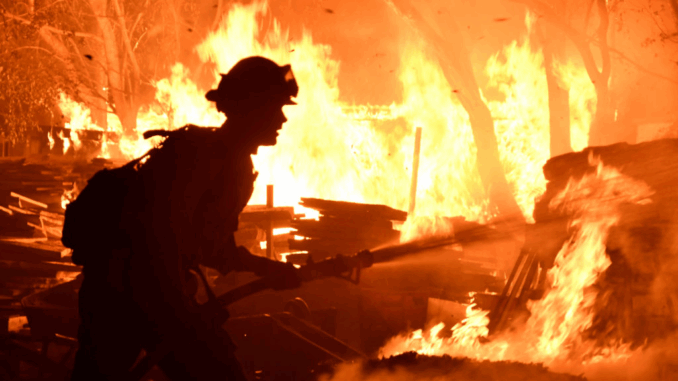
Fiction Meets Reality in the Flames of California
When Fire Country first premiered, many viewers expected the usual firefighter drama: high-stakes rescues, handsome leads, and explosive action. What they didn’t expect was a show that would mirror real-life wildfire disasters with such brutal honesty and emotional intensity.
From the ashes of California’s most devastating wildfires, Fire Country has built a fictional world that feels eerily familiar—and deeply personal. But how did a network drama manage to reflect real tragedy without exploiting it? The answer lies in its grounded writing, deep research, and emotional truth.
Based on Real Fire Zones—and Real Heroes
What sets Fire Country apart from other procedural shows is its authentic connection to real wildfire zones. Co-creator Max Thieriot, who plays Bode Donovan, grew up in Northern California and drew on personal experiences to shape the world of Edgewater. He knew the devastation wildfires could cause—not just to property, but to communities, families, and mental health.
The series was developed in collaboration with real Cal Fire personnel, and it shows. From the terminology to the gear to the psychological pressure of the job, the show nails the realism that other dramas only flirt with.
The Emotional Toll of the Job
One of the most impactful aspects of Fire Country is how it portrays the mental health cost of fighting fire. We see characters wrestle with grief, PTSD, survivor’s guilt, and burnout. Sharon Leone suffers from serious health issues that she hides while still trying to lead. Bode is haunted by personal loss and a desperate need to prove himself. Even Vince, before his tragic death, showed signs of emotional exhaustion.
This commitment to emotional realism is a rare thing on network television—and it matters. Because the toll of wildfires isn’t just in the smoke and flames. It’s in the broken relationships, the sleepless nights, and the feeling of helplessness when you can’t save everyone.
Not Just Drama—It’s a Tribute

Rather than exploiting real disasters for entertainment, Fire Country often feels like a tribute—to the firefighters who serve, the families they protect, and the resilience of communities that rise from the ashes.
Episodes like the one set during the Zabel Ridge fire ring especially true. They capture not just the logistics of evacuations and rescues, but the quiet heroism of those who stay behind, the guilt of those who flee, and the chaos of trying to organize safety in an uncontrollable crisis.
Bringing Public Attention to the Reality of Fire Season
Thanks to its popularity, Fire Country has inadvertently become an educational tool. Many viewers outside of California had no idea just how frequent—and how severe—wildfires have become in the western United States. The show has opened eyes to the reality of climate-driven fire seasons, underfunded firefighting programs, and the complex issue of inmate firefighter crews.
This is storytelling with purpose—entertaining, yes, but also socially aware.
Real-Life Heroes Behind the Camera
Fire Country employs several real firefighters as consultants. Their job is not just to ensure accuracy—it’s to honor the real experiences of the men and women on the line. And their presence makes a difference.
Scenes that could easily become Hollywood exaggerations instead feel tense, grounded, and deeply human. It’s not about fireballs and CGI. It’s about hard decisions, dangerous risks, and emotional aftermaths.
Conclusion: Television With a Conscience
In an era of flashy procedurals and formulaic action shows, Fire Country stands out because it dares to care. It burns with the urgency of real tragedy and glows with the hope of real redemption.
Whether you’ve experienced a wildfire firsthand or just want to understand the people who risk their lives to stop them, Fire Country offers more than drama—it offers truth, honor, and heart.
